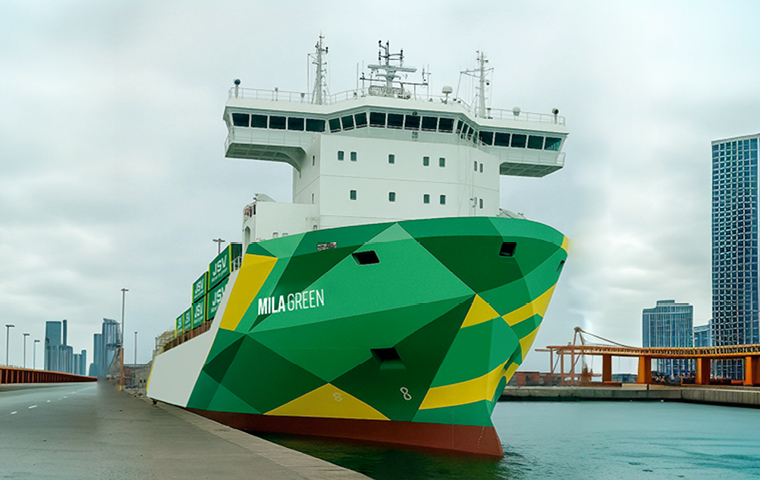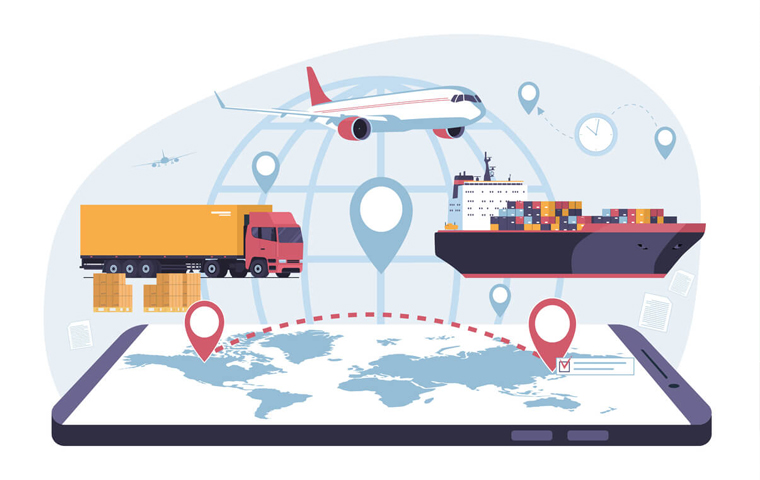
JSV Group acquires its second next-generation, low-emission vessel
JSV Group acquires its second next-generation, low-emission vessel

In the world of logistics and transportation, the terms “intermodal transportation” and “multimodal transportation” are fundamental to understanding how goods move from one place to another efficiently.
Both concepts refer to the use of multiple modes of transportation, but they have key differences that are important to understand.
This article will explore what these types of transportation are, their advantages, and how they can complement each other to optimize fleet management.
Multimodal transport, although similar to intermodal, involves the use of two or more modes of transport under a single contract of carriage .
The key difference is that in multimodal transport, responsibility for the entire journey rests with a single entity, called a multimodal transport operator (MTO). This operator coordinates all aspects of the transport, from the point of origin to the final destination.
Multimodal transport has established itself as an efficient, flexible, and sustainable logistics solution in an increasingly globalized market.
By combining different modes of transportation under a single contract, companies can optimize time, reduce costs, and improve the traceability of their shipments.
This method allows for more agile connection between distant points and adapts to the specific needs of each type of cargo, facilitating safer, more coordinated operations with a lower environmental impact.
| Advantage | Description | Example |
|---|---|---|
| Simplification of the logistics process | A single contract and a single point of contact for the entire process facilitate management, reducing administrative complexity. | An exporting company hires an OTM to transport merchandise from Spain to Germany, without having to coordinate with each carrier separately. |
| Clear responsibility | By having a single operator responsible for the entire logistics chain, incident resolution is faster and more efficient. | In the event of damage to the goods during transit, the customer manages the claim directly with the OTM, without relying on multiple intermediaries. |
| Optimization of times and costs | The OTM efficiently coordinates different modes of transportation, selecting the most cost-effective routes and reducing transit times. | The OTM chooses maritime transport for the international route and road transport for the final delivery, achieving a more economical and faster route. |
| Improved load tracking | Customers can always know the location of their merchandise thanks to a unified traceability system. | The customer accesses an online platform to check the status of their shipment without having to contact multiple operators. |
| Reduction of operational risks | The comprehensive control of the logistics process by the OTM reduces errors and loss of information. | Avoid delays due to lack of coordination between independent operators thanks to centralized planning. |
| Greater document efficiency | Documentation is simplified, as the entire process is carried out under a single contract and with unified procedures. | A single multimodal transport document is generated instead of managing multiple documents for each segment. |
| Greater adaptability | The OTM can redesign routes or change modes of transport in the event of unforeseen events or planning changes. | If there is a rail transport strike, the OTM reschedules road shipments without the customer having to intervene. |
Intermodal transportation refers to the movement of goods using two or more modes of transport, such as trucks, trains, and ships, without directly handling the cargo when changing modes.
The main characteristic of intermodal transport is that goods remain in the same cargo unit, such as a container, throughout the entire journey . This method is efficient because it minimizes cargo handling, reducing the risk of damage and loss, and facilitates transfer between transport modes.
Intermodal transport offers an excellent logistics alternative by integrating multiple modes of transport without having to handle the cargo during the journey.
Using a single cargo unit—such as a container or swap body—ensures greater safety during transport, minimizes damage, and streamlines loading and unloading processes.
This modality combines the efficiency of rail or maritime transport with the flexibility of road transport, providing significant benefits in terms of sustainability, costs, and operational efficiency.
| Advantage | Description | Example |
|---|---|---|
| Reduction of logistics costs | Intermodal transport allows you to take advantage of the economic benefits of each mode of transport, especially over long distances. | A company uses rail for most of the journey and trucks only for final delivery, significantly reducing the total shipping cost. |
| Greater energy efficiency | By combining modes such as rail and river transport, fuel consumption and environmental impact are reduced. | Rail transport replaces part of the road journey, reducing CO₂ emissions. |
| Reducing the risk of manipulation | The merchandise is not unloaded or handled between shipments, as it remains in the same cargo unit (container or trailer), which reduces damage and loss. | A container is transferred from ship to train and then to truck without being opened or manipulated at each transport change. |
| Transit time optimization | It allows you to select the fastest and smoothest routes by combining transportation modes based on availability and speed. | Rail transport avoids road jams and reaches its destination more quickly, then combines with trucks for the final stretch. |
| Operational flexibility | It facilitates adaptation to different routes and market conditions, as it allows for the combination of different infrastructures and resources. | In the event of an incident on the road, the company can redirect part of the route by train or waterway without halting the entire operation. |
| Greater load capacity | Modes such as rail and sea allow for the more efficient transportation of large volumes of goods. | One train can carry the equivalent of several trucks, reducing the number of trips required. |
| Ease of tracking and traceability | Today's intermodal systems allow for unified cargo tracking, improving logistics control. | The customer can track the entire journey of the container through a digital system, regardless of the modes used. |
There are important differences between the two transport systems that are important to understand in order to choose the most appropriate solution for the needs of each shipment.
Both modes combine different means of transport—sea, rail, air, or land—in a single journey, but their management, documentation, and logistical responsibilities vary significantly .
| Aspect | Multimodal transport | Intermodal transport |
|---|---|---|
| Number of contracts | A single contract for the entire journey, regardless of the modes used. | Several contracts are required, one for each operator or mode of transport. |
| Responsibility | A single transport operator is responsible for the entire logistics process. | Responsibility is divided among the various participating operators. |
| Administrative management | Simpler, since documentation and coordination are centralized. | More complex, with greater documentation and coordination between parties. |
| Cargo tracking | Unified system for traceability and control of shipments. | Monitoring depends on each operator or section. |
| Load unit | The same cargo unit is not always maintained; there may be transshipments. | The cargo unit (container, trailer, etc.) remains intact throughout the entire journey. |
| Operational flexibility | Greater flexibility in choosing and combining modes and routes. | Limited flexibility, as all modes are required to allow the use of the same charging unit. |
| Practical example | A company hires an operator who handles the entire journey: boat + train + truck, under a single contract. | A company contracts separately with a shipping company, a railway company, and a trucking company, keeping the same container. |
Choosing between intermodal and multimodal transportation depends on several factors that must be considered to make the best logistics decision.
Below is a comparison table to help determine when to use each type of transportation:
| Situation / Type of operation | Recommended option | Justification |
|---|---|---|
| The goal is to simplify management and have a single point of contact. | Multimodal transport | A single contract and a responsible operator facilitate coordination and reduce administrative burden. |
| The route requires combining several modes of transport and each section is operated by a different provider. | Intermodal transport | It allows greater control over each section and the choice of specialized providers by type of transport. |
| The goal is to reduce total transport costs. | Both (as planned) | Both options can optimize costs, but it will depend on the strategy: multimodal can offer better overall prices, while intermodal allows for segment-by-segment negotiations. |
| It is important to keep the cargo unit intact throughout the journey. | Intermodal transport | Avoid handling and reduce damage, since the merchandise remains in the same container. |
| Unified traceability and full control of the shipment are needed. | Multimodal transport | It offers an integrated tracking system with greater visibility of the entire route. |
| The shipment is international, with multiple sections and high volume | Multimodal transport | Coordination through a single operator streamlines customs procedures and reduces processing times. |
| The company has experience in logistics and wants to negotiate each section separately. | Intermodal transport | It allows you to optimize each part of the journey with specific operators and greater control over individual costs. |
| The final destination is in an area with limited access or requires flexibility in the final stretch | Both (depending on planning) | Multimodal can be chosen if simplicity is sought, or intermodal if adaptability and control in the last mile are required. |

JSV Group acquires its second next-generation, low-emission vessel

This container offers every advantage: high capacity and excellent maneuverability.